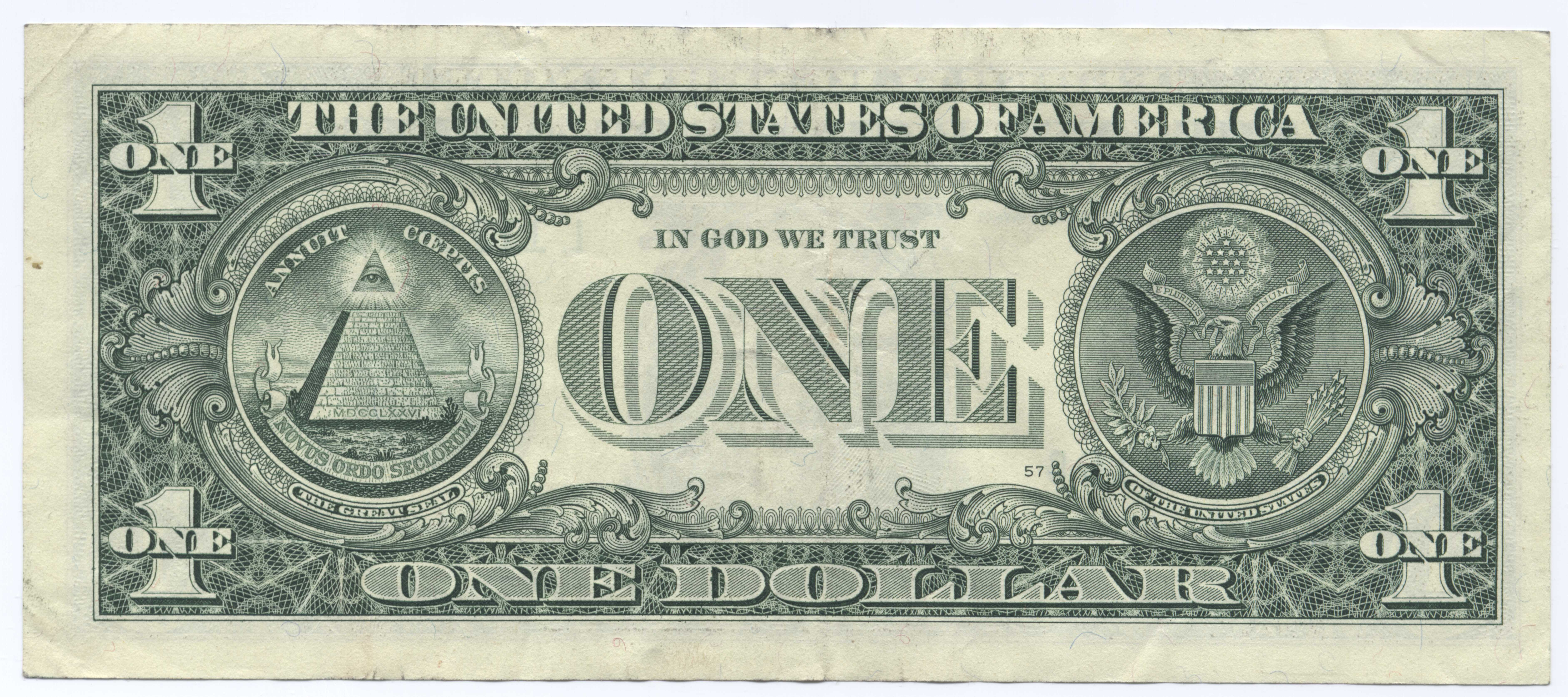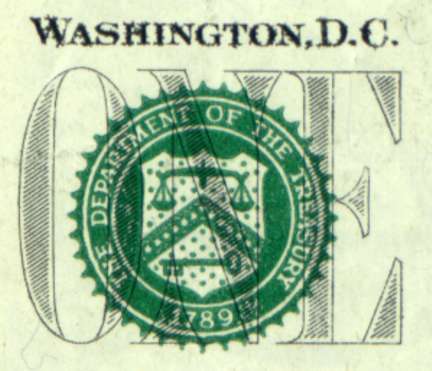After all, most people don't think about the significance of all those little symbols on an American $1 bill when they're using it to buy a Twix bar, are they?
Well, prepare to learn the meaning of every nook and cranny that has a meaning, because we're analyzing a dollar today.
First, we'll need a dollar bill. Take one out if you have one on you; if you don't, just check out the high-res dollar bill below. (You may need to open a new window or tab to check it out at higher quality)
I'll need to post two pictures: one of the front and one of the back. Here they are:
Okay, let's get started.
First, here's some general information you might now have known about American currency:
- All dollar bills, no matter their worth, aren't paper; they're a special cotton linen blend, with little red and blue silk fibers running through them. (That's why they don't fall apart when you accidentally put them through the washer.)
- The ingredients for the ink used to make the dollar bills is the best kept secret in the United States.
- After being printed, dollar bills are starched for water resistance, then pressed. (The starch makes it feel and sound so crisp.)
- The one dollar bill you're looking at was originally printed in 1957 with that design. (Re: truthorfiction.com)
Okay, let's start with the front side of the dollar bill. Got your dollar out/picture loaded? Okay, let's begin!
Okay, can you locate the US Treasury Seal? It looks like this:
Well, those four symbols (yeah, I said four) have meanings:
- The scales on the top are supposed to represent a balanced budget.
- The key at the bottom half is actually the imprint of the key to the treasury. (This is debated, as some people say the key is nothing but a symbol of authority)
- The divider between the scale and the key is a carpenter's square, which is a symbol for an "even cut." (This is debated, as some people say that it's a chevron representing the original 13 colonies, since there are 13 stars on the chevron)
- And, of course, the encasing for all of these symbols is the shield, which represents the country's strength.
Unfortunately, that's all for the front side of the dollar bill that has any meaning relevant to us.
And, just to keep you in suspense, I'm postponing the next part of the dollar bill analysis for tomorrow! So come on back and learn something new! (:



No comments:
Post a Comment